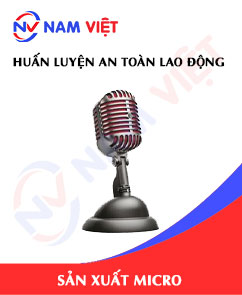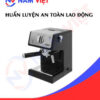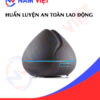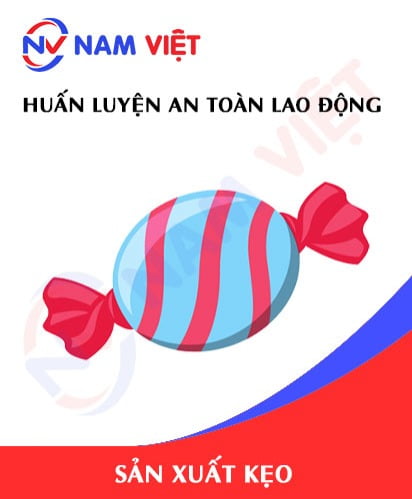Occupational Safety Training in Micro Manufacturing
99,000 ₫
Note: The above price is calculated for one person, the price may fluctuate depending on the number of trainees participating in the course and depending on market movements. For more accurate pricing support, please refer to the quotation table or contact our consulting staff directly.
Occupational safety is an important issue in micro manufacturing factories and needs to be addressed promptly to ensure the health and safety of workers, and to enhance the reputation of businesses. The Occupational safety training course is one of the effective solutions to raise awareness about accident prevention for workers participating in micro manufacturing.
Table of Contents
Toggle1. Overview of Micros
a. What is a Micro?
A micro (abbreviated from “microphone”) is a device that records or converts sound into electrical signals. Micros are widely used in recording, broadcasting, television, online conferences, seminars, karaoke, and many other fields.
A micro consists of a sound sensor and an electronic circuit to convert sound into electrical signals. The sound sensor is usually a vibrating diaphragm (called a membrane) or an electrode assembly. When sound enters, it causes the diaphragm or electrode assembly to vibrate, generating a current representing the sound. The electronic circuit then amplifies the signal so it can be used for recording or transmitting to an audio system.
There are many different types of micros designed for various environments and applications, including condenser micros, dynamic micros, directional micros, omnidirectional micros, and many others.

b. Machinery used in micro production
The micro production process includes multiple stages, where various machinery and equipment are used to perform each step.
Some commonly used machinery and equipment in micro production include:
- Cutting machines: used to cut and process micro components, including the casing, diaphragm, and other parts.
- Soldering machines: used to solder micro components together, such as the diaphragm and connector ports.
- Plastic injection machines: used to mold plastic parts of the micro, including the casing and other components.
- Diaphragm fabrication machines: used to manufacture micro diaphragms.
- Measuring machines: used to check the quality of components and the final product.
- CNC machining equipment: used to process and manufacture components with high precision.
- Testing and inspection equipment: used to verify the accuracy and performance of micros before deployment.
Different types of machinery and equipment are used depending on the specific micro type and the production process of each manufacturer.

c. Micro manufacturers in Vietnam
Currently, Vietnam has several well-known micro brands, including:
- Dai Tin: One of the most famous micro brands in Vietnam, producing various types of micros, including wireless micros, karaoke micros, recording micros, conference micros, and more.
- Takstar: A well-known micro brand from China, widely distributed in Vietnam and highly regarded for sound quality and design.
- Audio-technica: A globally recognized micro brand, also available in Vietnam. Audio-technica produces many professional micros, including recording, conference, wireless, and more.
- Sony: A famous electronics brand worldwide, producing professional and consumer micros for various applications.
- Saramonic: A professional micro and audio equipment brand, with high-quality products distributed in Vietnam.
These brands are highly rated for quality and performance, offering a variety of products to meet user needs.
d. Specific roles in a micro manufacturing factory
Group 1
- Executive director, deputy executive director, and department heads in a micro manufacturing factory.
Group 2
- Safety officers: manage safety in the factory, design safety procedures, supervise and ensure employees comply with safe work practices.
Group 3
- Material processing: After planning is complete, materials required for micro production are cut, processed, fabricated, and molded.
- Assembly: Components are assembled and connections checked for accuracy to create the complete micro.
- Quality control: After production, micros are thoroughly inspected to ensure sound quality and proper operation. Quality control equipment includes sound meters, sensitivity testers, and other testing devices.
- Packing and shipping: Finally, micro products are packaged and shipped to retailers or end customers.
Group 4
- Office work, service, sales, marketing.
- Production management, quality management, human resources, materials management, financial and accounting management.
- Design: The first step in micro production, where engineers and designers create detailed design plans for the micros.
e. Popular micro types on the market
There are many types of micros used for different purposes. Some of the most popular types include:
- Handheld micros: the most common type, used for live performances, conferences, and television events.
- Gooseneck micros: designed to be mounted on tables or walls, typically used for meetings and studios.
- Headset micros: designed to be worn on the head, commonly used for live performances or teaching and presentations.
- Lapel micros: designed to be clipped onto clothing or hats, used in sports, filmmaking, and live performances.
- Wireless micros: allow users to move freely without cable connections, commonly used in live events and performances.
These are just some common examples; the market offers many other types designed for various uses.

2. Overview of occupational safety training for micro production
This article focuses on Group 3, as Group 3 directly participates in production and faces the highest occupational safety risks. Refer to other groups here.
a. What is Group 3 occupational safety training?
- Group 3 occupational safety training consists of sessions that equip workers with awareness and methods to prevent workplace accidents.
- The safety training course helps workers identify and avoid hazards, reducing the risk of workplace accidents.
REGISTER FOR OCCUPATIONAL SAFETY TRAINING SERVICE
b. Training duration
Initial safety training duration
- Total training duration is at least 24 hours, including assessment time.
- 8 hours of theoretical study on safety and labor hygiene policies and laws
- 8 hours of theoretical study on basic occupational safety and hygiene knowledge
- 4 hours of theoretical study on specialized training content
- 2 hours of practical training on specialized content
- 2 hours of final theoretical assessment
The safety training center will distribute the sessions depending on employee scheduling. Typically, there are 6 training sessions over 3 days, provided the manufacturer arranges continuous learning time.
Periodic safety training
- Before the occupational safety card expires, employees seeking renewal must attend periodic occupational safety training, with the periodic training duration being at least 50% of the initial training duration.
Explanation: total periodic safety training duration is at least 12 hours, including assessment. After completing periodic training and passing the assessment, employees will have their occupational safety cards renewed.
c. Training content
| No. | TRAINING CONTENT | TRAINING DURATION (HOURS) | |||
| Total | Including | ||||
| Theory | Practice | Assessment | |||
| I | Policies and laws on occupational safety and hygiene | 8 | 8 | 0 | 0 |
| 1 | Overview of occupational safety and hygiene legal documents. | 6 | 6 | ||
| 2 | Standards and technical regulations on occupational safety and hygiene. | 1 | 1 | ||
| 3 | Specific regulations by state management agencies on safety when constructing, expanding, or renovating facilities for manufacturing, usage, storage, and inspection of machinery, equipment, materials, and substances with strict safety requirements. | 1 | 1 | ||
| II | Basic knowledge on occupational safety and hygiene | 8 | 8 | 0 | 0 |
| 1 | Basic knowledge of hazardous and harmful factors in the workplace. | 4 | 4 | ||
| 2 | Methods to improve working conditions. | 1 | 1 | ||
| 3 | Safety culture in production and business. | 1 | 1 | ||
| 4 | Rights and obligations of employers and employees; policies and regimes on occupational safety and hygiene; functions and duties of the safety network and safety officers. | 1 | 1 | ||
| 5 | Safety and hygiene regulations, signs, guidance signs, use of safety equipment and personal protective equipment; first aid skills, and occupational disease prevention. | 1 | 1 | ||
| III | Specialized training content | 6 | 4 | 2 | 0 |
| Comprehensive knowledge of machines, equipment, substances that generate hazardous factors; analysis, evaluation, risk management of occupational safety, safe working procedures with machinery, equipment, and substances with strict safety requirements. | 6 | 4 | 2 | ||
| IV | Final assessment of safety training | 2 | 2 | 0 | 0 |
| Total | 24 | 22 | 2 | ||
See more training content of 6 groups
d. Occupational safety card
After completing the safety training and passing the assessment, employees will be issued an occupational safety card (commonly called Group 3 safety certificate).
The Group 3 safety card displays information such as full name, date of birth, job, and specific work environment. It also includes training duration, a red stamp, and a signature confirming course completion.
According to regulations on safety card issuance specified in Clause 2 of Article 24 of Decree 44/2016/ND-CP, there are two cases:
- If the employer and employee have a labor contract, the employer must sign, stamp, and affix seals on the safety card for Group 3 trainees after they complete training from the occupational safety training unit and pass the assessment.
- If the worker is freelance or seasonal, without a labor contract, the training unit must sign, stamp, and affix seals on the safety card after training and passing the assessment.

3. Identifying Hazards Affecting Workers in Micro Production
During micro production, there are several hazards that may affect workers’ health. Here are some common hazards and how to recognize them:
- Noise: During micro production, equipment and machinery may produce noise that affects workers’ hearing. Workers can recognize this hazard when they hear excessively loud noise or frequently work in a high-noise environment.
- Dust: During micro production, materials such as metal and plastic may generate dust and harmful fumes. Workers can recognize this hazard when they see a dusty work environment or experience difficulty breathing, swallowing, or throat irritation.
- Chemicals: During micro production, chemicals may be used for cleaning, washing, or processing materials. These chemicals can harm workers’ health if not used properly. Workers can recognize this hazard when they detect unpleasant odors or signs of skin irritation.
- High voltage: During micro production, electrical equipment may generate high voltage, posing a danger to workers if not used correctly. Workers can recognize this hazard when electrical equipment shows signs of malfunction or frequent electrical issues occur.
4. Common Occupational Accidents for Workers in Micro Production
During micro production, common occupational accidents may include:
- Falling materials, fire, and explosion: Equipment and materials may fall and cause injuries. Additionally, chemicals and high voltage can lead to fire and explosion accidents.
- Cutting and injury accidents: Tools, machinery, and equipment may cause cutting or injury accidents for workers.
- Puncture and collision accidents: Puncture and collision accidents are potential risks, such as collisions between equipment, machinery, or being punctured by rivets or other objects.
- Health-related accidents: Causes may include inhaling toxic substances, working in environments with high light levels, noise, or polluted air, resulting in respiratory, skin, or eye diseases.

5. Safety Measures When Participating in Micro Production
To ensure safety during micro production, manufacturers need to implement the following measures:
- Provide personal protective equipment: Manufacturers should provide helmets, safety glasses, masks, gloves, safety shoes, and other devices to protect workers’ health.
- Occupational safety training: Manufacturers should train workers on how to use equipment, machinery, chemicals, and personal protective measures to ensure safety during production.
- Perform periodic maintenance, inspection, and repair: Manufacturers should conduct regular maintenance for equipment, machinery, electrical systems, compressed air systems, and other devices to ensure safety and prevent accidents caused by malfunctions.
- Ensure electrical safety: Manufacturers should ensure electrical systems are installed and used correctly to avoid electrical accidents.
- Use safe chemicals: Manufacturers should use safe chemicals and ensure workers are trained on how to use them.
- Ensure a safe working environment: Manufacturers should provide adequate lighting, fresh and ventilated air to minimize injury or health risks.
- Ensure safety during transportation: Manufacturers should ensure safety during transportation to avoid accidents or product damage.
- Periodically conduct workplace environment monitoring in factories, collect and analyze harmful factors for workers, and adjust to reduce hazards to prevent occupational diseases.
6. Benefits of Occupational Safety Training in Micro Production
An Toan Nam Viet provides your business with the following benefits after completing occupational safety training courses according to Decree 44/2016/ND-CP on occupational safety and hygiene:
- Workers can recognize potential occupational hazards and take preventive measures to avoid accidents.
- Your business can establish risk prevention measures in production, operation, and maintenance processes.
- Minimize costs associated with workplace safety risks.
- Continuous production helps increase labor productivity and product quality.
- Compliance with occupational safety laws, avoiding legal risks.
- Builds reputation and professionalism, enhancing your company’s brand.
Nam Viet training courses are solutions to prevent external hazards from affecting individuals, helping them avoid dangers that could lead to injuries or, in severe cases, death.
REGISTER FOR OCCUPATIONAL SAFETY TRAINING SERVICE
7. Customer Feedback After Completing Micro Production Occupational Safety Training
An Toan Nam Viet has years of experience supporting many businesses across Vietnam, particularly in southern provinces. This responsibility is highly valued by Nam Viet, and therefore our Occupational Safety Training programs are increasingly professional. Our growth is driven by both positive feedback and constructive suggestions from business partners. Below are some testimonials from our clients.
See more customer interviews after using services from An Toan Nam Viet
8. Occupational Safety Training Capabilities of An Toan Nam Viet
An Toan Nam Viet is a reputable and high-quality occupational safety training center in Vietnam. Training sessions are held continuously at production workshops, factories, and construction sites across all 63 provinces of Vietnam.
REGISTER FOR OCCUPATIONAL SAFETY TRAINING SERVICE
Occupational Safety Training License
- An Toan Nam Viet has been inspected and certified by the Department of Occupational Safety of the Ministry of Labor – Invalids and Social Affairs, confirming eligibility for occupational safety and hygiene training. This strengthens our capacity in occupational safety training.

Training Materials and Lectures
- Before being used in occupational safety training courses, materials are reviewed to ensure accuracy and effectiveness.
- Our instructors follow standardized teaching methods developed by An Toan Nam Viet experts to maximize knowledge transfer to trainees.
Facilities
- Controlling classroom factors affects teaching efficiency and knowledge absorption.
- Our training facilities provide spacious classrooms meeting standards for area, lighting, and training equipment.
9. Nationwide Reputable Occupational Safety Training Center
At An Toan Nam Viet, occupational safety training is our top priority. We equip workers with knowledge to protect themselves, contributing to national development.
We carefully prepare all tools, teaching aids, curriculum, materials, sound, and lighting to ensure effective training.
Our instructors are experts with years of experience and research in identifying workplace hazards and prevention methods.
Lectures are practical, lively, and easy to understand, helping workers absorb knowledge comfortably, always aligned with Decree 44/2016/ND-CP.
Our training center proudly provides professional occupational safety training with advantages:
- Competitive training costs while ensuring quality.
- Flexible training schedules according to production needs.
- Fast and legally compliant certification procedures.
- Experienced instructors.
- Controlled classroom factors to improve teaching efficiency and knowledge absorption.
- Curriculum tailored to occupational safety in enterprises.
- Dedicated and professional support for clients quickly and accurately.

10. Additional References for Micro Production Occupational Safety Training
- Micro Production Occupational Safety Materials
- Occupational Safety Training Materials
- Occupational Safety Test Materials
- Micro Production Occupational Safety Training Curriculum
- Micro Production Occupational Safety Quiz
1 review for Occupational Safety Training in Micro Manufacturing
No comments yet















namchinh.haiphong341
Triển khai nhanh gọn và chu đáo, tôi rất hài lòng!